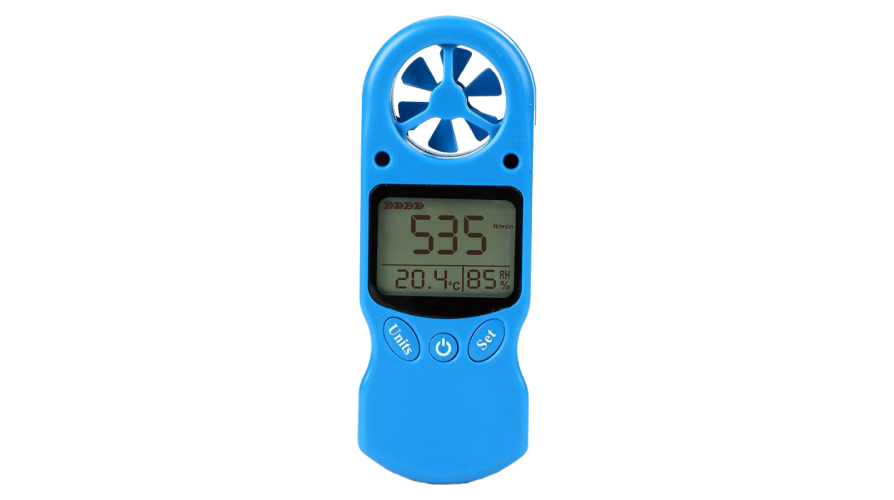Recognizing Different Sorts Of Anemometers for Different Applications
Recognizing Different Sorts Of Anemometers for Different Applications
Blog Article
Anemometers Revealed: Understanding Their Value in Environmental Surveillance and Safety And Security Actions
The role of anemometers in environmental surveillance and precaution is usually taken too lightly, yet their relevance is undeniable. These tools have a long background rooted in scientific questions and technical developments, evolving to end up being important devices in different fields. From meteorology to aeronautics safety and security, anemometers play an important duty in giving exact data that educates decision-making processes and improves general security. Comprehending the intricacies of anemometers unveils a world of vital insights that are fundamental to our understanding of the atmosphere and the steps we take to ensure safety and security.
Background of Anemometers
The development of anemometers can be mapped back to the old human beings where primary wind gauging devices were very first utilized. These early wind measurement devices laid the structure for the growth of a lot more sophisticated anemometers in time. One of the earliest recognized anemometers was the hemispherical mug anemometer created by Leon Battista Alberti in the 15th century. This design consisted of 4 hemispherical mugs that gathered wind power, supplying a measurement of its intensity based on the rate of turning.
Over the years, advancements in modern technology led to the growth of more contemporary anemometers, consisting of ultrasonic anemometers and laser Doppler anemometers, providing boosted accuracy and performance in measuring wind speed and instructions. The history of anemometers showcases an impressive trip of advancement and progression in the field of weather forecasting.
Sorts Of Anemometers
Throughout the area of meteorology, different types of anemometers have actually been developed to precisely gauge wind speed and direction. Sonic anemometers use ultrasonic signals to determine wind rate and instructions accurately. Hot-wire anemometers operate based on the principle that the cooling result of wind on a warmed cord is symmetrical to the wind rate.
Applications in Meteorology
Having actually discussed the different sorts of anemometers used in weather forecasting for determining wind speed and instructions, it is important to discover their useful applications in the field. Anemometers play a critical duty in meteorology by offering precise and real-time data on wind problems (anemometer). Meteorologists utilize anemometers to check wind rate and direction to anticipate weather condition patterns, concern warnings for severe weather condition events like hurricanes, tornados, and tornadoes, and analyze atmospheric conditions for aviation safety and security
In weather forecasting, anemometers aid in recognizing regional and regional wind patterns, which are essential for forecasting climate changes and figuring out weather trends. These tools are likewise used in study to study microclimates, urban warmth islands, and air pollution diffusion. Additionally, anemometers are used in agriculture to optimize crop management practices, such as irrigation and pesticide application, based upon wind conditions.
Value in Air Travel Safety
An integral facet of making sure aeronautics safety hinges on the precise monitoring of wind conditions making use of anemometers. Anemometers play an essential function in aviation by offering real-time data on wind rate and direction, helping pilots in making notified decisions throughout flight, touchdown, and take-off. Strong and unforeseeable winds can significantly affect airplane operations, making it important for aeronautics authorities to count on accurate wind measurements to make certain the safety of guests and team.

In the dynamic setting of air travel, where even minor adjustments in wind about his speed and direction can have extensive results, anemometers stand as indispensable tools for advertising safe and secure and safe air traveling.
Role in Environmental Research Study
Just how do anemometers add to developments in environmental research study? Anemometers play an important role in environmental research by offering crucial data on wind speed and direction. This information is essential for understanding various climatic procedures, such as air pollution dispersion, weather condition patterns, and climate adjustment. By accurately determining wind qualities, anemometers assist scientists analyze the activity of pollutants in the air, evaluate the influence of industrial exhausts, and anticipate the spread of pollutants in the setting.


Final Thought
In conclusion, anemometers have actually played an important duty in ecological surveillance and safety steps. Understanding the importance of anemometers is vital for accurately gauging wind speed and direction, which is image source vital for predicting weather condition patterns, ensuring safe air travel procedures, and carrying out ecological research studies.
One of the earliest known anemometers was the hemispherical mug anemometer designed by Leon Battista Alberti in the 15th century. Over the years, innovations in innovation led to the advancement of more modern anemometers, including ultrasonic anemometers and laser Doppler anemometers, providing boosted accuracy and efficiency in gauging wind rate and direction. Hot-wire anemometers run based on the read the full info here principle that the cooling impact of wind on a warmed cord is proportional to the wind speed. Meteorologists utilize anemometers to check wind rate and instructions to forecast weather patterns, problem cautions for serious weather condition events like hurricanes, tornados, and twisters, and evaluate climatic conditions for air travel security.
Understanding the importance of anemometers is essential for properly measuring wind speed and direction, which is crucial for forecasting weather condition patterns, ensuring secure air travel procedures, and performing environmental studies. (anemometer)
Report this page